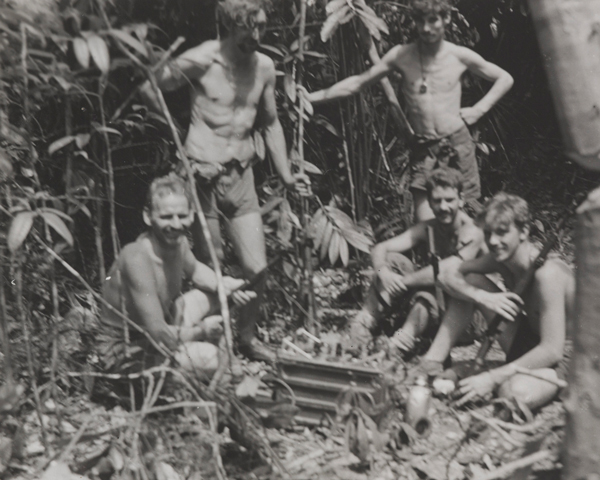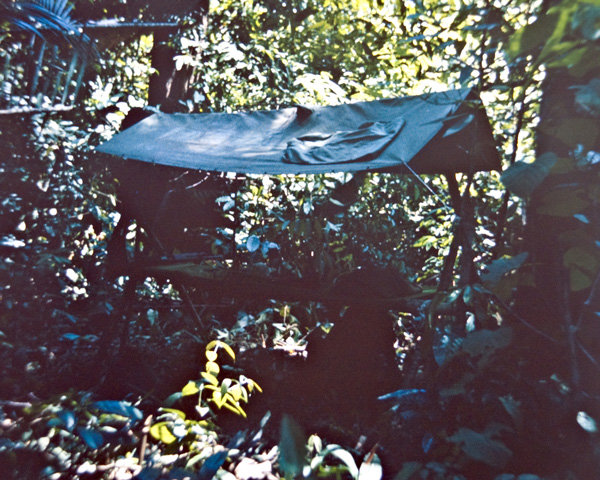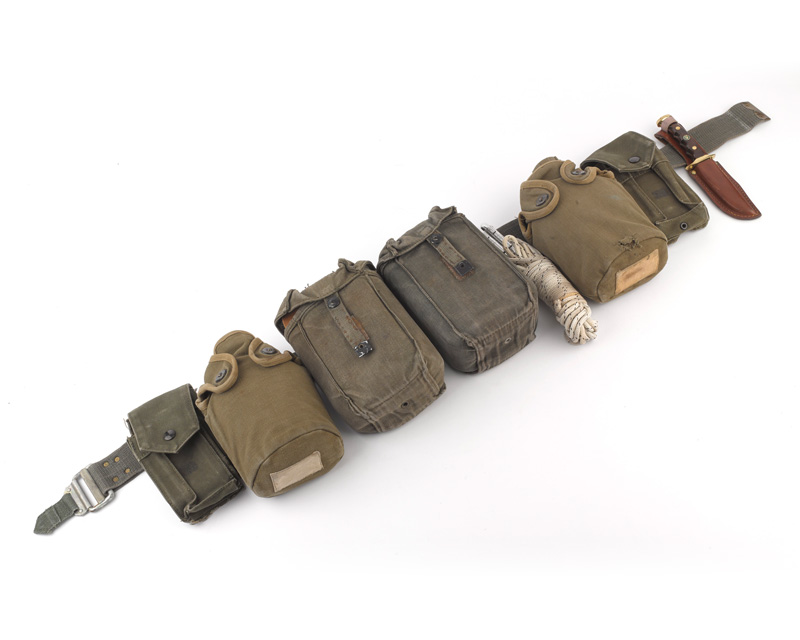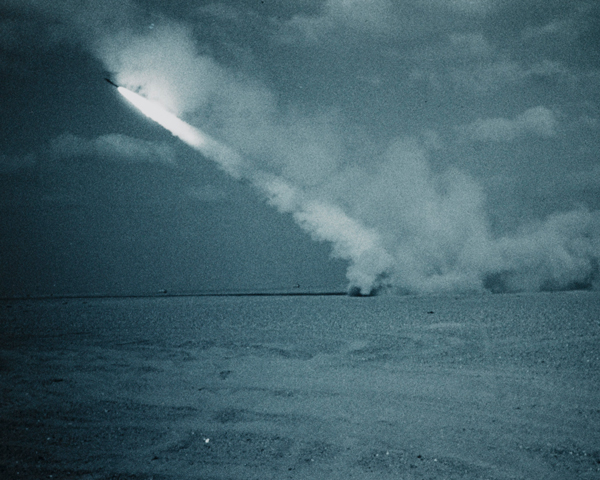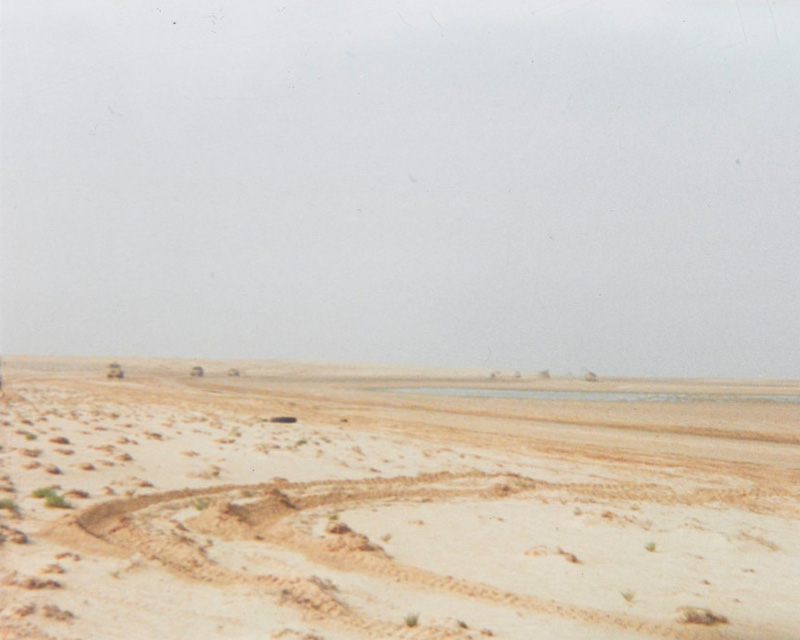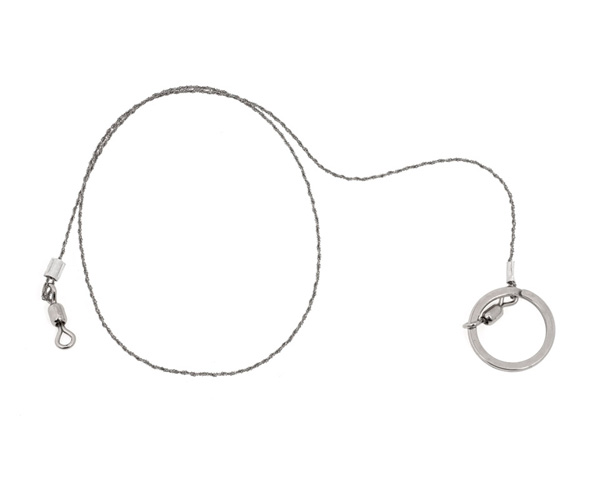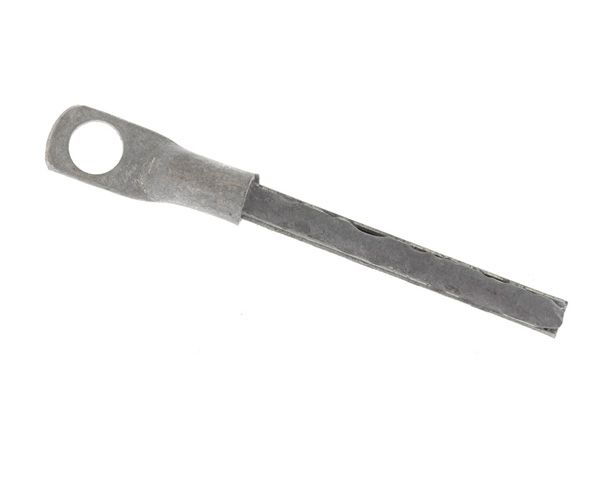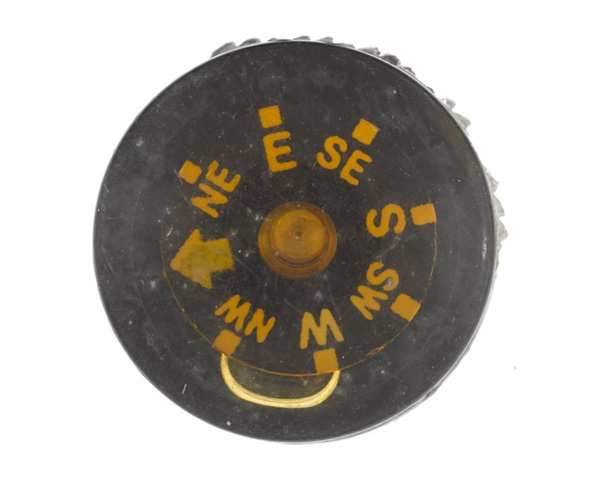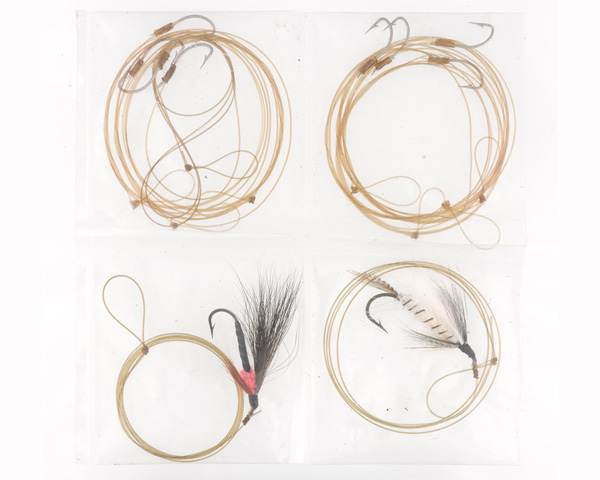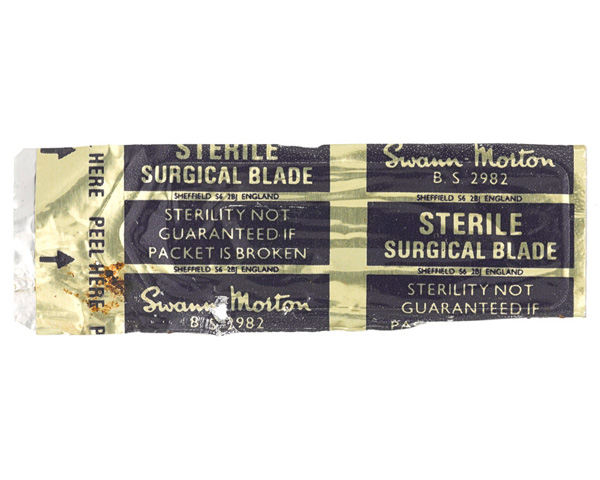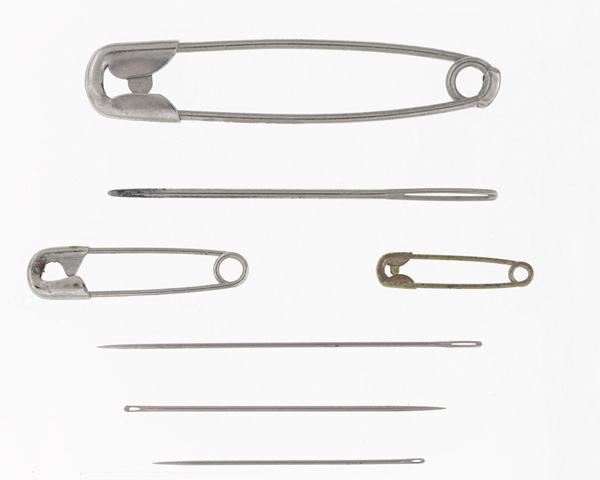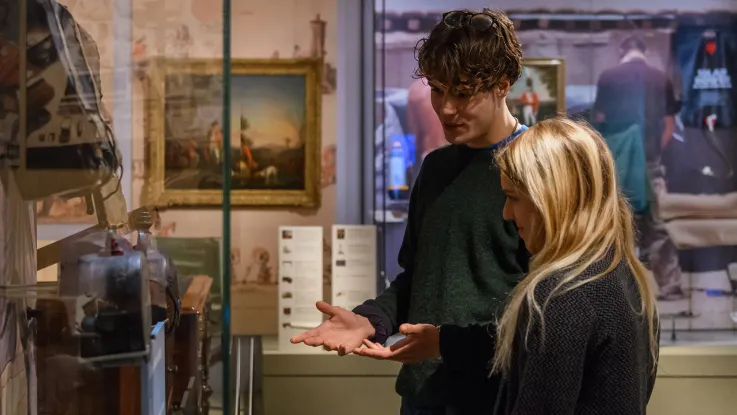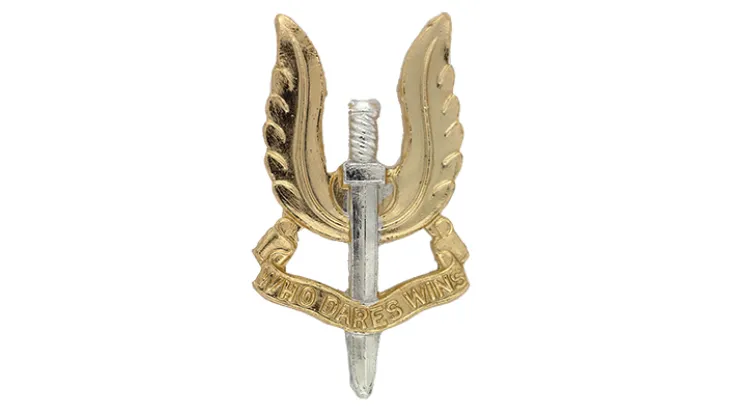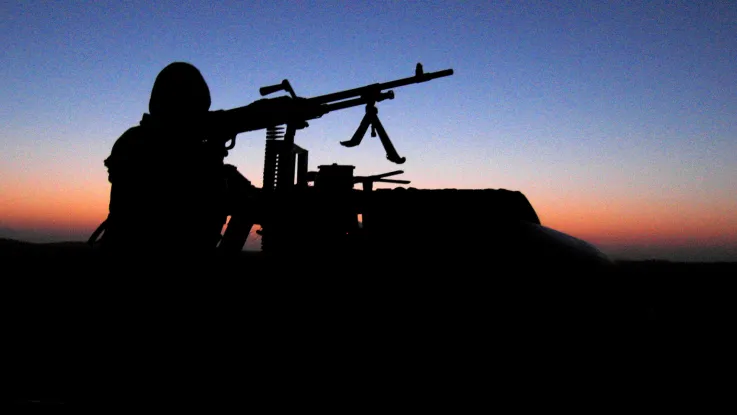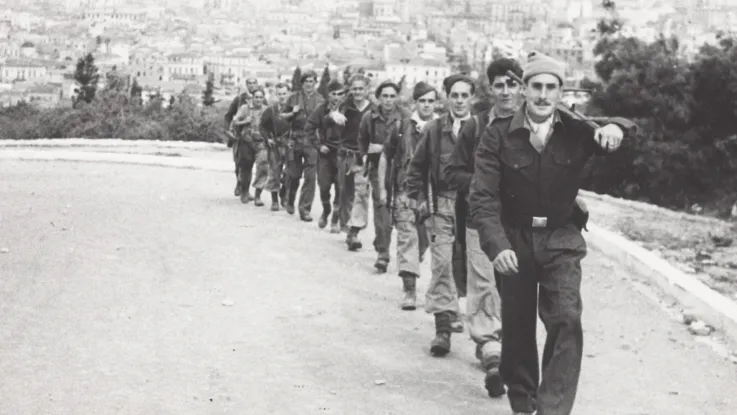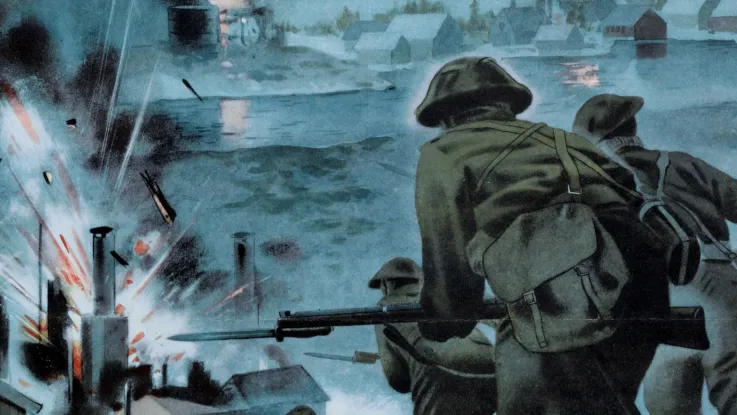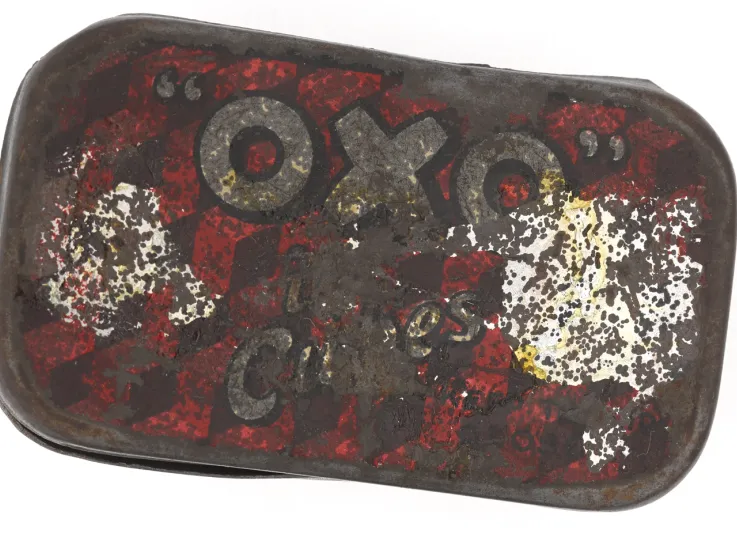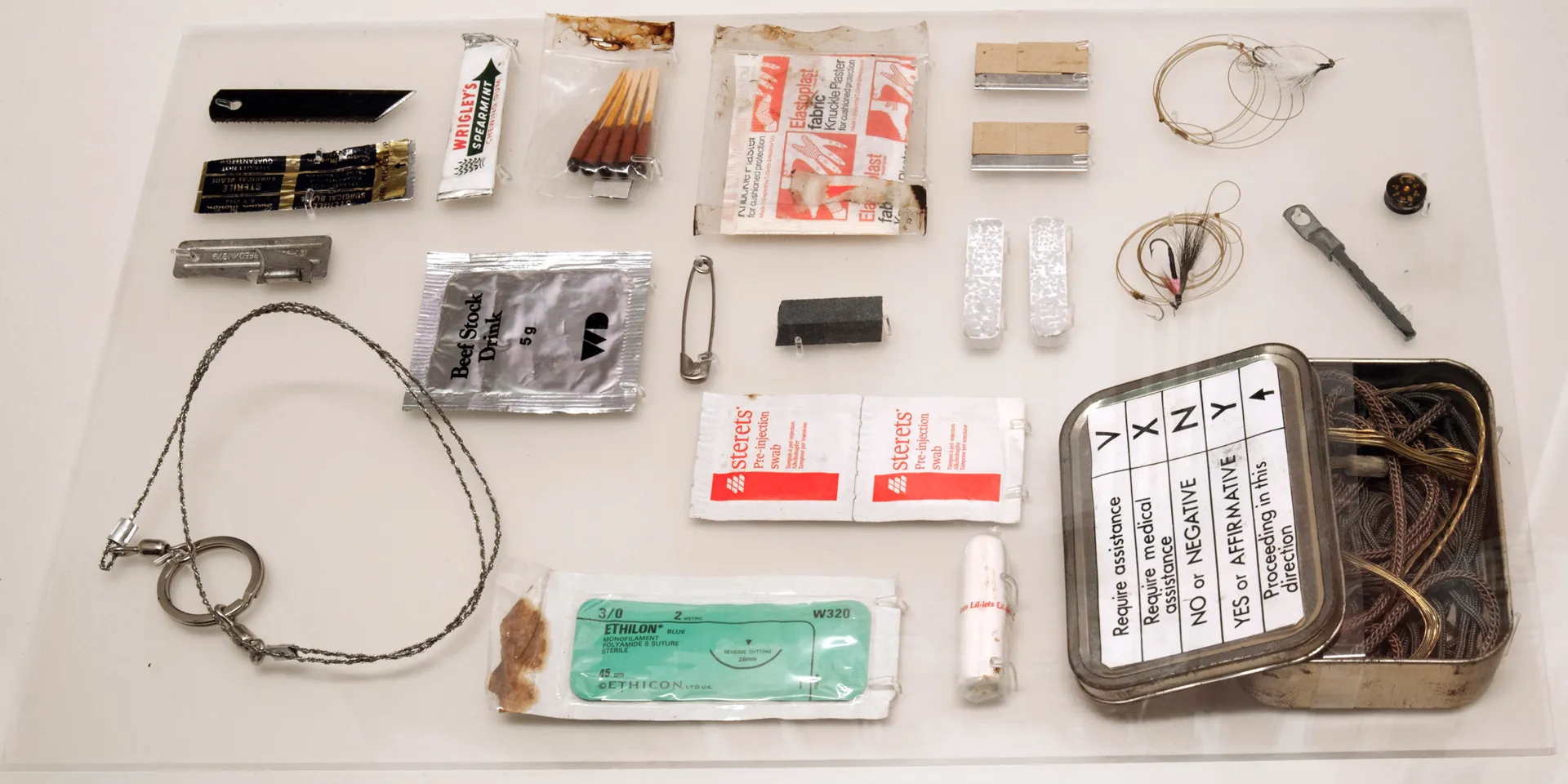
Andy McNab’s survival kit, c1990
Surviving behind enemy lines
Special Forces soldiers are required to operate behind enemy lines. They need to be able to survive and fight in the most hostile environments. Often isolated and far from friendly forces, patrols are expected to carry equipment that will enable them to survive for several days or weeks.
Training
Combat Survival is the last major phase of Special Forces continuation training. Recruits are instructed in escape and evasion techniques, and how to resist interrogation if captured. They are taught how to stay alive in the wild, navigate with the sun, light a fire, build shelters, collect water and forage for food.
The purpose of this training is to prepare candidates mentally and physically to the point where anything they encounter on actual operations will be something they have already dealt with. Their lives - as well as their team’s - may depend on this mental resilience, adaptability and survival knowledge.
‘Survival is the art of staying alive. Any equipment you have must be considered a bonus. You must know how to take everything possible from nature and use it to the full...’Sergeant Major John 'Lofty' Wiseman, 'SAS Survival Handbook' — 1986
Equipment
In contrast to other military personnel, Special Forces soldiers have a wide range of specialist equipment available to them. However, they usually have to carry everything necessary for their mission on their person.
As a result, choosing what to take with them requires a degree of creative thinking. State-of-the-art technology is sometimes overlooked in favour of basic equipment that can be adapted for different uses.
As well as carrying a bergen (or backpack), Special Forces troops wear an escape belt. This contains items that will enable them to survive for about two days if they have to operate without their bergen. These essentials would always include water, rations, extra ammunition and a survival knife. Separately, they also carry an escape map, compass, and a personal survival kit.
Andy McNab’s personal survival kit
A survival kit needs to be small enough to fit in a tobacco tin, but still contain enough equipment to preserve life in an emergency situation.
This kit was put together by Sergeant Steven Mitchell - better known by his pen-name, Andy McNab - who commanded the now-famous Bravo Two Zero patrol into Iraq during the Gulf War in 1991.
His eight-man Special Air Service (SAS) patrol was dropped by helicopter behind enemy lines to gather intelligence, but their mission went wrong from the outset. Having left their bergens behind, they went on the run in the hostile desert environment without rations and equipment.
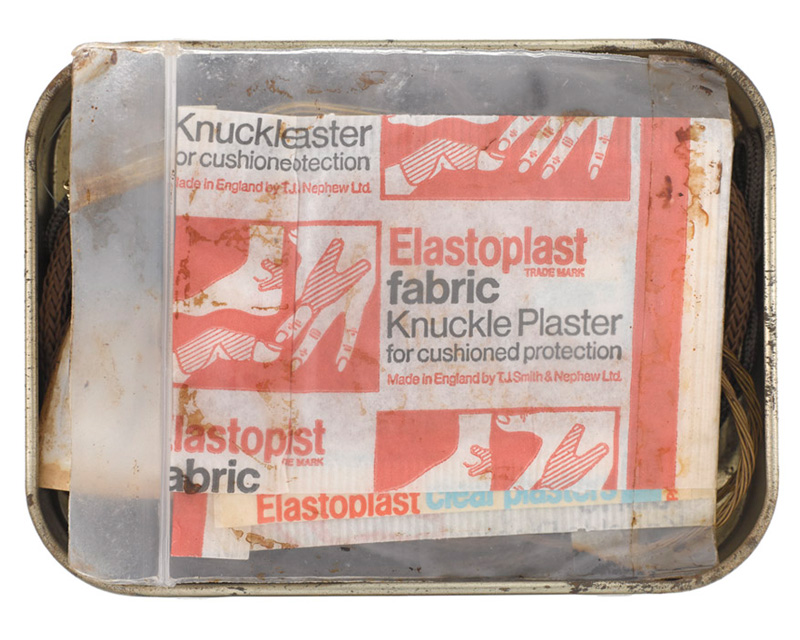
Andy McNab’s survival kit, c1990
Cutting tools
A cutting tool is essential. The one in McNab’s escape kit has both a straight and a serrated blade, so that it can be used for different purposes. It can also be used as a striker with the flint to start a fire.
His tin also includes a wire saw. The wire is fitted with one or two key rings at the ends as handles. This saw takes up minimal space, but it can be used to cut branches or trees and will even cut through metal.
Making fire
McNab’s kit contains a flint and a striker as well as regular and waterproof matches. Ordinary matches can be made waterproof by dipping their heads in melted candle fat.
Two other items in his kit can be used to help light a fire: alcohol wipes and a tampon. When opened out, the tampon’s flammable material can be used as tinder.
Navigation and communication
To aid navigation the kit has a secondary escape compass. Button-size compasses, such as this one, can be sewn into clothing or easily hidden for potential escape situations.
Special Forces personnel usually have small heliograph mirrors as part of their escape kits. These are used to send morse code signals by reflecting sunlight. Although there is no heliograph in this kit, the highly polished inside of the tobacco tin can be used in the same way.
Food and drink
When rations can't be sourced, a Special Forces operator needs to be able to live off the land. The fishing lines and hooks in McNab's kit can be used to catch fish and also birds. The snare wires can be used to set traps for small animals or booby traps for enemy soldiers.
Condoms serve as excellent makeshift water containers. The ones in this kit have a capacity of about one litre and can be used to collect water from streams or rivers when on the run.
Medical supplies
Stranded in enemy territory, Special Forces personnel often have to be their own doctors. McNab's kit features basic medical supplies to provide first aid to both himself and other team members.
It includes sterile medical sutures, a sterile surgical blade, disposable blood lancet, elastoplast and alcohol swabs. The tampon can also be used to plug wounds.
Clothing
When operating in extreme environments behind enemy lines, clothes start to deteriorate rapidly.
McNab's survival tin contains a small sewing kit - comprising three safety pins, needle with thread and pins - which can be used for quick clothing repairs. It can also be used for emergency medical treatment.
‘Everyone will always have some form of survival kit on them’
Interviewed in 2018, Jason Fox, a veteran of the Special Boat Service (SBS), describes the contents of a typical survival kit, as used by Special Forces personnel.
See it on display
After leaving the SAS, McNab went on to become a best-selling author. The education he received during his time in the Army helped him to improve the limited reading and writing skills he had when he first enlisted.
Come and inspect the contents of his survival kit in our Soldier gallery. It can be found alongside other items exploring the challenges and opportunities that soldiers encounter when transitioning back to civilian life.

